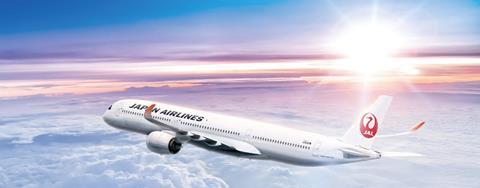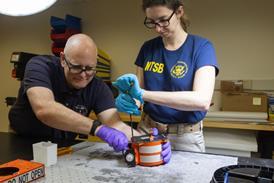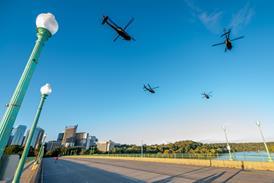Japan Airlines expects to take delivery of two Airbus A350-1000s – its new long-haul flagship — before the end of 2023, as it eyes a “competitive” edge on its trans-Pacific services.
The airline will take delivery of another five A350-1000s in 2024, says senior vice-president for route marketing Ross Leggett. JAL has 13 -1000s on order, which the new type to replace its fleet of Boeing 777-300ERs.

JAL executive vice-president Shinichiro Shimizu says that the airline will deploy the type on flights to North America, and eventually replace all the 777-300ERs currently in operation. However, he declines to comment on which other cities it is considering.
Both Shimizu and Leggett were speaking to FlightGlobal at the Association of Asia Pacific Airlines’ Assembly of Presidents in Singapore.
Shimizu says the airline expects “more competitive service” on its trans-Pacific operations with the A350’s new cabin products. In October, JAL unveiled details of the A350 configuration – including seat count – for the widebody twins, picking Safran to provide the premium-class seats, with Recaro supplying those in the economy cabin.
First- and business-class seating will for the first time feature enclosed private suites, while premium-economy seats are fixed back, says JAL.
The airline’s first -1000 was to have entered service in November, coinciding with the start of the Northern Winter schedule, but supply chain delays pushed the launch timeline to the right.
The airline first disclosed plans to make the A350 its new flagship in May 2021, in a medium-term business update that was released alongside its full-year financial results. JAL also operates the smaller A350-900 on domestic routes.
The airline also has orders for 21 737 Max 8s, with the first example due to enter the fleet in 2026. Shimizu says deliveries of the narrowbodies, which will be put on domestic routes, are “still on track”.
JAPAN OUTBOUND RECOVERING
The airline executives also note that outbound travel demand has picked up in the six months to 30 September, even as it remains well below the inbound recovery.
Japanese carriers have long flagged a disparity in the recoveries for inbound and outbound demand, due largely to a weaker Japanese Yen.
Shimizu says that while the inbound recovery “has gone beyond our expectations”, outbound demand is slower to catch up. Still, he notes that there is an “upward trend” this year, led by an increase in outbound business travel.
Transit traffic between Asia and North America is also performing well, with more growth expected in the near-term, adds Shimizu.
According to JAL, it recovered about 70% of its pre-pandemic traffic as of 30 September, with domestic at around 90%.
The macroeconomic factors have also led to a change in Japanese outbound travel patterns, says Shimizu, with passengers opting for more short- to medium-haul trips – as opposed to going to the USA or Europe – during the summer vacation period.


























